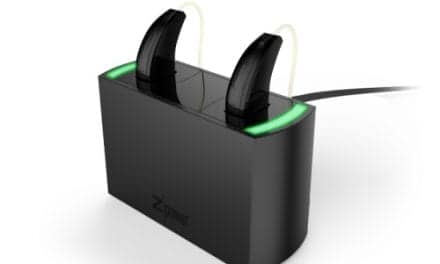Is 115 dB SPL better than a level of 112 dB SPL…
Back to Basics | March 2023 Hearing Review
By Marshall Chasin, AuD
Of the many hearing aid parameters that optimize a hearing aid for music, the peak input limiting level is the most important. This is the highest level sound that can successfully be transduced through the analog-to-digital (A/D) converter of the hearing aid without distortion. If this level is too low, front-end distortion will occur related to the higher levels associated with music, and no amount of software processing (that occurs later in the hearing aid circuitry) can resolve this. The hearing aid industry has used some ingenious methods to increase the peak input limiting level to the limit of modern hearing aid microphones, and these usually include a combination of analog compression prior to the A/D converter, a voltage transformer, post 16-bit architecture, and any number of auto-ranging A/D detector circuitries. In the marketplace, numbers such as 115 dB SPL or even 119 dB SPL have been quoted as the peak input limiting level; a number that would ensure that the A/D conversion process would not distort even the higher levels of live music.
But is 115 dB SPL better than a level of 112 dB SPL? Well, it depends on how that number was calculated. Strictly speaking, the peak input limiting level is the level where no distortion will occur as a result of a higher-level input, but what is “no distortion”? Unlike the hearing aid test standard ANSI S3.22, where well-defined methods are stated for measuring parameters such as gain and frequency response, there is no standard for measuring the peak input limiting level.

One approach that manufacturers can take is to use a sufficiently high-level 1000 Hz pure-tone and look for distortion products at 3000 Hz, —this is shown in the spectrum in Figure 1. Whenever a waveform is clipped (either during the input or the output) and a square wave is created, odd-numbered multiples of the primary are created. If the peak input limiting level is sufficiently high, then no square wave is created, and a 1000 Hz pure-tone will be… merely a 1000 Hz pure-tone, but if there is a poorly configured A/D converter front-end or the input signal is too high to be adequately converted to a digital signal without distortion, then additional odd-numbered harmonic distortion products are created. While this number is a characteristic of the A/D converter and its associated circuitry, this assumes that the hearing aid has been set for minimal gain and maximum OSPL90 to ensure that the number is reflective of the peak INPUT limiting level and not an OUTPUT-related saturation effect.
It would be reasonable for a manufacturer to quote the dB SPL level of the input when a 3000 Hz distortion product reaches a certain level (such as 5 dB). If the peak input limiting level is quoted for any one hearing aid as 115 dB SPL, for example, this may mean that the hearing aid can handle a distortion-free input on the order of 112-114 dB SPL (since there is still some distortion noted at 3000 Hz for inputs on the order of 115 dB SPL). In practice, it may even be easier to define the “difference” between the input level at 1000 Hz and the level at 3000 Hz and plot that number as an input-output curve. The input sound level that the slope deviates from 1:1 can be considered the peak input limiting level.
While well-controlled inputs levels of 115 dB SPL can easily be generated by equipment in manufacturing and repair facilities, this is not something that can be easily replicated in the clinic. But simply asking the manufacturer to calculate this level (which is independent of gain and output) will provide a realistic number that is characteristic of that particular hearing aid and can be used to inform the potential hard-of-hearing consumer whether the amplification will be adequate for not only speech but for music inputs as well.






